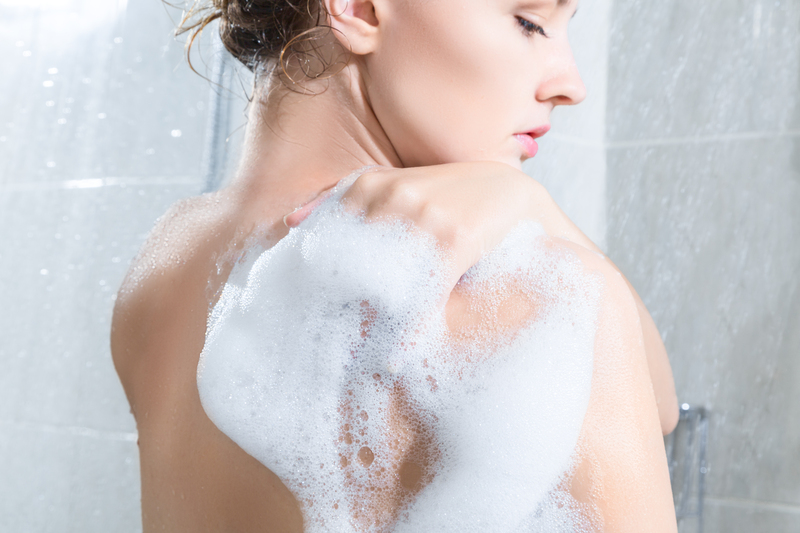Breathe Easy at Home: How to Reduce Dust and Allergens
Posted on 23/09/2025
Breathe Easy at Home: How to Reduce Dust and Allergens
When was the last time you took a deep, satisfying breath inside your home? For millions of people living with allergies or respiratory issues, the answer might be "never." The indoor environment, while comfortable and protective, can harbor a surprising assortment of dust, pollen, pet dander, and other irritants. However, with the right strategies and simple changes, you can significantly reduce dust and allergens in your home and create a healthier living space for you and your loved ones.
Understanding the Impact of Dust and Allergens
Before diving into solutions, it's essential to understand why dust and allergens accumulate and how they affect our health. Indoor air pollution is recognized as a serious health threat, often exceeding outdoor pollution levels. Common household allergens include:
- Dust mites
- Pet dander
- Mold spores
- Pollen
- Cockroach droppings
Exposure to these allergens can trigger symptoms such as sneezing, coughing, watery eyes, itchy skin, and even aggravated asthma. The good news? With some awareness and commitment, you can transform your home's indoor air quality.

Where Does Dust Come From?
Dust is more than just visible dirt. It's a mixture of tiny particles like:
- Dead skin cells
- Fabric fibers
- Soil
- Hair (both human and animal)
- Pollen and plant matter
Many of these particles are at the perfect size to remain suspended in the air before eventually settling on surfaces. Understanding the sources helps you to target specific areas as you seek to eliminate dust and household allergens.
The Science Behind Cleaning: Why Allergens Accumulate
Allergens thrive in soft surfaces, dark places, and places left undisturbed. As homes become better insulated for energy savings, they often trap more allergens indoors. Static electricity, low humidity, and poor ventilation can also increase dust buildup. By addressing these factors, you can reduce allergy triggers and breathe easier.
Proven Ways to Reduce Dust and Allergens at Home
1. Maintain a Regular Cleaning Schedule
Consistency is key. Cleaning frequently prevents the buildup of dust and allows you to manage sources of allergens before they become problematic. Focus on these tasks:
- Dusting - Use a damp microfiber cloth to trap particles instead of spreading them around.
- Vacuuming - Vacuum at least twice a week with a vacuum cleaner equipped with a HEPA filter.
- Mopping floors - Mopping removes the finest dust that vacuuming might miss.
- Wiping down surfaces - Don't forget windowsills, baseboards, and ceiling fans.
2. Invest in the Right Tools and Filters
- HEPA Filters: These filters capture 99.97% of particles as small as 0.3 microns. Use them in vacuums, air purifiers, and your central HVAC system.
- Microfiber Cloths: More effective than cotton or paper towels at attracting and holding dust.
- High-efficiency furnace filters: Replace these every 3 months or as recommended.
By trapping and removing more particles, you significantly enhance your home's air quality.
3. Control Humidity and Ventilation
Dust mites and mold thrive in damp environments. Keeping humidity levels between 30% and 50% makes your home less hospitable for them. Here's how:
- Use a dehumidifier in basements and bathrooms.
- Run exhaust fans during cooking and after showers.
- Open windows periodically to air things out, but limit this during peak pollen seasons.
4. Minimize Clutter for Easier Cleaning
Cluttered spaces collect dust and make thorough cleaning difficult. Focus on:
- Storing items in closed containers or bins
- Donating or discarding items you no longer use
- Organizing shelves and clearing surfaces, especially in bedrooms and living areas
Less clutter also means less surface area for dust accumulation.
5. Pick Allergen-Resistant Materials
Choose wisely as you decorate or renovate your home! For allergy-prone individuals, opt for:
- Hard flooring (wood, tile, vinyl) instead of wall-to-wall carpets
- Leather or vinyl furniture over fabric upholstery
- Allergen-proof pillows and mattress covers to prevent dust mites
6. Wash Linens and Fabrics Frequently
Bedding, curtains, and soft furnishings can harbor dust mites and pet dander. To effectively reduce allergens in the bedroom:
- Launder sheets, pillowcases, and blankets in hot water at least once a week
- Wash curtains and other machine-washable fabrics regularly
- Vacuum mattresses and upholstered furniture twice a month
7. Take Care of Pet Allergens
Pet hair and dander are common causes of allergy symptoms. To manage pet-related allergens at home:
- Bathe pets regularly and brush them outside
- Keep pets out of bedrooms and off upholstered furniture
- Vacuum frequently with a HEPA-filtered vacuum
- Wash pet bedding in hot water weekly
8. Maintain HVAC Systems and Air Ducts
Your heating and cooling systems distribute air--and potentially dust--throughout the home. Make sure to:
- Replace HVAC filters every 1-3 months
- Schedule annual professional maintenance
- Consider having air ducts professionally cleaned if you notice excess dust, mold, or pests
Clean air circulation means a cleaner, healthier home environment.
9. Use Air Purifiers Strategically
Placing air purifiers in high-traffic or high-allergen areas like bedrooms and living rooms can help remove airborne dust and allergens. For best results:
- Choose HEPA-certified air purifiers
- Replace filters as directed by the manufacturer
- Place purifiers away from walls and obstructions
10. Stop Dirt at the Door
Outdoor dust, soil, pollen, and mold can easily be tracked into the house. A few preventive steps:
- Use doormats--one outside, one inside each entrance
- Encourage a "no shoes" policy indoors
- Wipe pet paws before letting them in
Room-by-Room Guide to Reducing Dust and Allergens
Living Room
- Vacuum sofas and rugs weekly
- Use blinds or washable curtains
- Wipe down electronics, which attract dust due to static
Bedrooms
- Encase mattresses and pillows in allergen-proof covers
- Launder bedding weekly
- Keep pets out to minimize allergens
Kitchen
- Clean counters and floors daily
- Store food in airtight containers to avoid pests
- Run the exhaust fan to prevent moisture buildup
Bathrooms
- Use a bathroom fan to reduce humidity
- Regularly clean tubs, showers, and tile grout to prevent mold
- Fix leaks promptly to discourage mold growth
Basement
- Run a dehumidifier to maintain proper humidity levels
- Check for mold and mildew periodically
- Limit stored items and use sealed bins
Common Mistakes in Allergen Reduction (and How to Avoid Them)
Even the most diligent homeowners can make missteps. Here are some common pitfalls:
- Dry dusting--always use a damp cloth
- Using the wrong vacuum--pick one with a sealed HEPA system
- Neglecting filters--dirty filters spread dust instead of trapping it
- Overwatering plants--this can encourage mold growth
- Ignoring hidden sources--behind furniture, under beds, on appliances
Remember: Every small effort adds up to big results when it comes to a dust-free, allergen-reduced home.
Smart Home Upgrades to Improve Indoor Air Quality
If you're ready to take the next step and invest in your indoor environment, consider these upgrades:
- Install a whole-house air purifier
- Add a fresh air ventilation system
- Replace old carpets with solid flooring
- Upgrade to smart thermostats and humidity sensors to automate air quality control
Allergen-Reducing Habits for Every Household
Beyond deep cleaning and equipment, daily habits are essential for maintaining an allergy-friendly home:
- Shower and change clothes after being outdoors to remove pollen and pollutants
- Keep windows closed during allergy season or high pollen days
- Avoid scented cleaning products, which may trigger sensitivities
- Encourage hand-washing, especially after touching pets or going outside
Myths About Dust and Allergen Control
- Myth: "Closing all windows always keeps allergens out."
Fact: Some ventilation is necessary for optimal air quality. Use filtered fresh air if possible. - Myth: "Indoor plants always cleanse the air."
Fact: While certain plants help with air quality, overwatering can contribute to mold and worsen allergy symptoms. - Myth: "What you can't see won't hurt you."
Fact: Many allergens are invisible--regular cleaning and prevention is still crucial.

When to Seek Professional Help
If you struggle with persistent allergy symptoms despite following these tips, consider reaching out to:
- Allergists or immunologists for testing and treatment plans
- Professional cleaning services for deep-cleaning and remediation
- HVAC specialists for indoor air quality improvements and duct cleaning
Conclusion: A Healthier, Happier Home Awaits
Reducing dust and allergens in your home is not just about cleaning--it's about making thoughtful choices and building healthier habits. By investing a little time and effort, you can transform your living space into a sanctuary for easy breathing, better sleep, and well-being, especially if you or your family suffer from allergies or asthma.
Ready to breathe easy at home? Start with these actionable steps, and you'll notice the difference sooner than you think!
Key Takeaways
- Target dust and allergens with regular, strategic cleaning
- Invest in HEPA filters, air purifiers, and allergen-proof bedding
- Declutter, ventilate properly, and control humidity to inhibit allergen growth
- Adopt daily habits and smart upgrades for long-term relief
Keep these guidelines in mind, and your quest to reduce dust and allergens at home will benefit everyone's comfort and health. Here's to fresher, cleaner air and a more enjoyable home!




